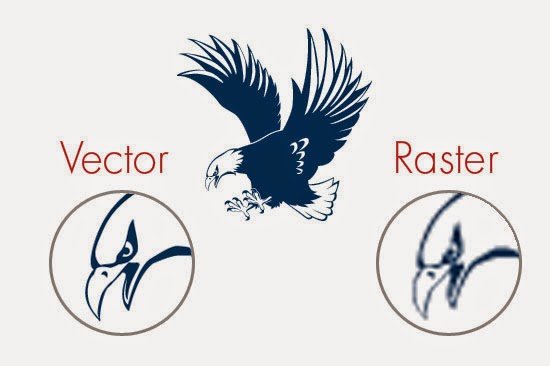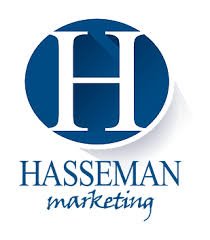by Kirby Hasseman

I really enjoy creating. It most often takes the form of some kind of content. We do video, podcasts and blogs that we hope will provide value, and then promote what we are trying to do. It’s my version of art. It’s what I create.
Recently, however, I took a short break. I spent September traveling a lot, and I decided to “give myself” a break from this blog. I still created videos (you can find those here on my Youtube channel) but I decided to take a breath on writing. I even took a break from the He Said She Said podcast (we came back yesterday). The idea was to refresh, re-energize and re-focus. This was my mental vacation…and that makes sense, right?
This break was good…for a short time. After that, I noticed a few things I did not expect.
Creating Is a Muscle
When you set out to write a blog nearly every day, a huge concern is that you are going to run out of ideas. I was certainly concerned with that. That is why, when I start on a goal like this, I like to have a few topics or blogs done. It gives me a “head start.” But what I found was almost the opposite. The more you create, the more your brain sees ideas for content all around you. You see a lesson in your interaction with your kids, or your team, or the cable company. Ideas for content are suddenly everywhere. Creating becomes a muscle that you can strengthen. Rather than running out of energy or ideas, you suddenly find yourself with more.
And just like a muscle, when you take TOO long of a break, the muscle gets weaker. Your brain gets a bit lazier. It misses those signals. Sure, you pick up on the big moments, but you miss the day to day. The fallacy is that you will run out of ideas. The truth is, the more you create, the stronger you get.
Where Do I Put That Energy?
The other thing I found out about myself is the act of creating is actually cathartic for me. This is where I take the time to push out value and good in the world (often first thing in the morning). The activity of writing (or editing or whatever) helps to frame my mind in a positive and productive way for the rest of my day. When I don’t do that, I have this pent of energy that needs released. And recently, I feel like I am releasing it in the form of complaining. I am still editorializing on projects, activities, elections and more. I am just doing it in a more negative and less productive way. I talk about why we all need to STOP complaining immediately here.
It’s time to be more intentional of where I put that energy. Without that, the energy will come out in other ways that might not serve me as well.
Make sure you never miss a piece of content we produce! You can head to our blog page here. We have blogs (obviously) and podcasts and videos all in one place. You can also sign up to become a VIP here.
by Kirby Hasseman
There is often confusion around Art files and what types we can accept. Terms like Vector Art, Camera Ready, etc… get thrown around. Most people, unless they are graphic artists, do not understand the differences. So, what is vector art and why does your logo or artwork need to be vector? Let’s answer that question now!
Vector art is created using vector illustration software programs, such as Adobe Illustrator, Freehand, and Corel Draw, among others. The art created with these programs can be blown up in size infinitely without any loss of quality. (Think of zooming into a picture and it becomes blurry.) 
Raster Graphics, such as photographs, and graphics files created in Adobe Photoshop, Paint Shop Pro, and other Raster editing programs, in most cases cannot be used. Notice how in the example picture that the edges of the art become blurry rigid and not smooth? With Vector Art you can blow up the image to any size with no loss of quality.
How Can I tell if what I have is Vector Art?
Vector art is usually created in Adobe Illustrator, and is commonly saved as a particular file type: .ai. Vector art can be saved in other file formats (such as .eps, .svg, or .pdf). But, it is important to remember that just because a file is saved in one of these formats, does not mean that it is truly vector art. Only art originally created in a vector editing program, such as Adobe Illustrator, is truly vector art. Also, you can identify vector art by process of elimination. There are some file formats that can only be Raster art, and therefore cannot be Vector art. The most common examples are .jpeg, .png, .bmp, .gif, .psd, .tif. These files cannot be vector art.
Art Charges
There are art charges that are incurred on some orders if Vector art is not able to be provided. In this case, we must either take the time internally to re-create your art, or send the provided art off to an outside designer that can re-create your artwork in a Vector-based program. If you see an art charge on your bill, this is most likely what has happened.There are also art charges, sometimes, for layouts and formatting even if you already have the vector file. For Example: If you have your logo in Vector format but you want to add specific text under it for a promotion. The text needs to be added in a Vector Based Program and sized appropriately for the item that it will be imprinted on. This might incur an art charge too.
Ask your Designer
Keep in mind that if a professional design created your art for you, chances are they may have your artwork saved as vector art, even if they have not sent that file to you. Some designers do not provide their clients with vector art, as they assume that the client will not be able to open the file. So, if you had a professional logo designed for you, but all you have is a JPEG, or something similar, contact your artist, and ask them for vector art.
Our hope is, this will helps shine a light on what Vector Art is, and why you need it! Please reach out to art@hassemanmarketing.com if you have additional questions. If you want more ideas on art, marketing, promotions and content creation, make sure you check out our blog page here. Oh…and if you want to get valuable content delivered to your email once a week…sign up to become a VIP here.



